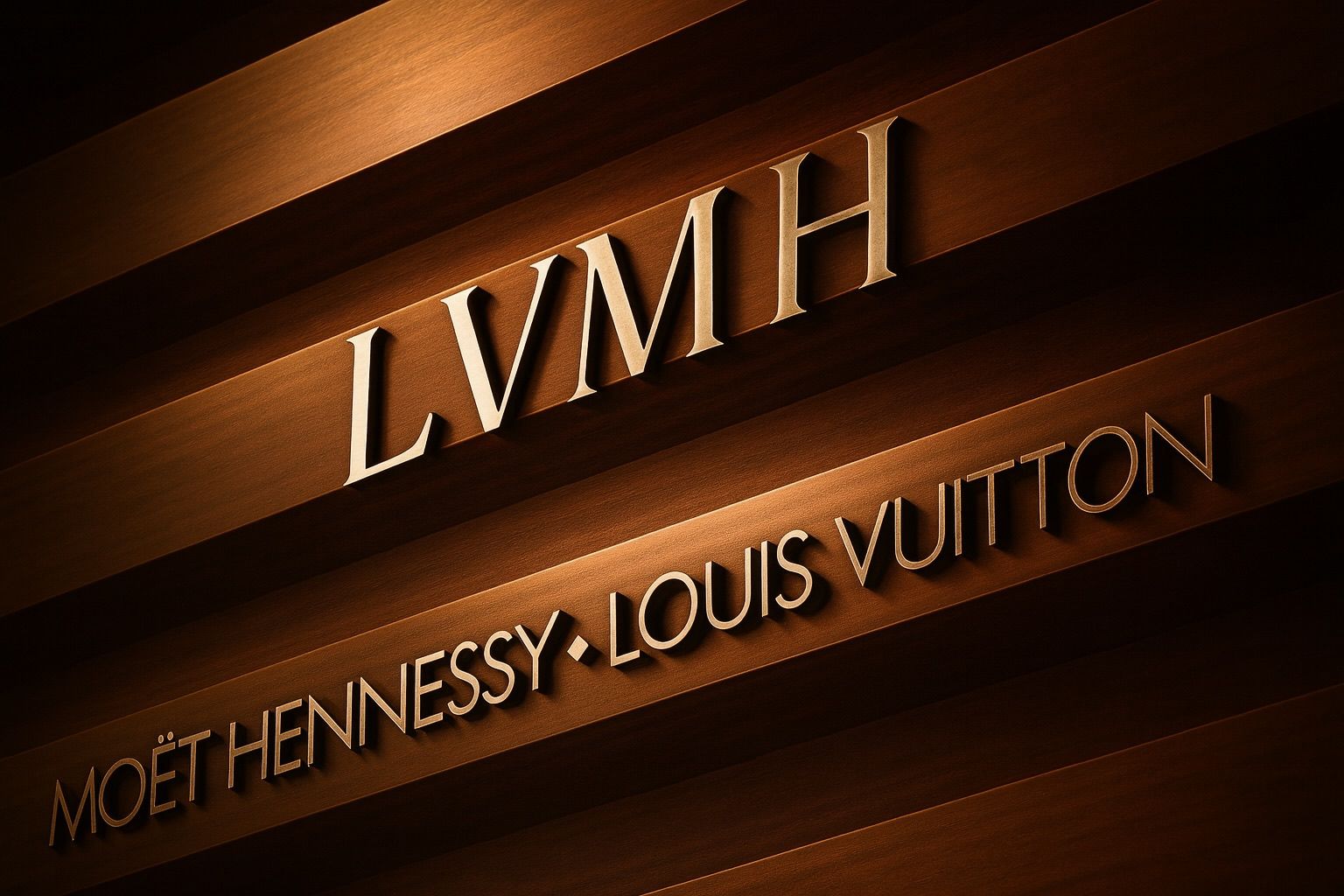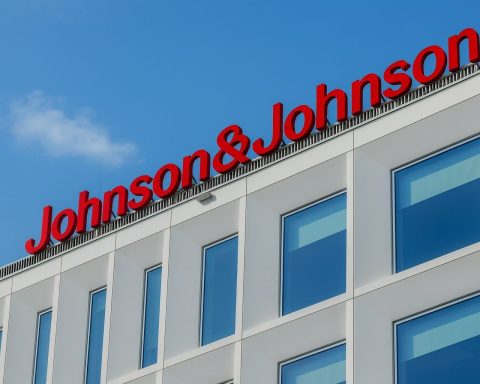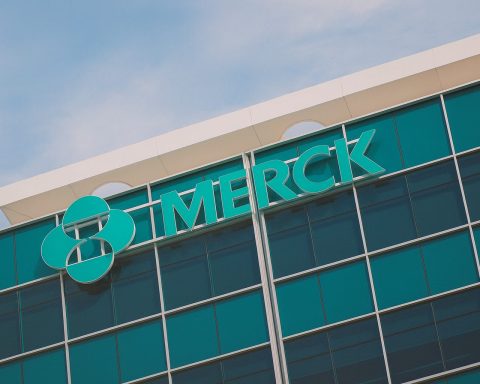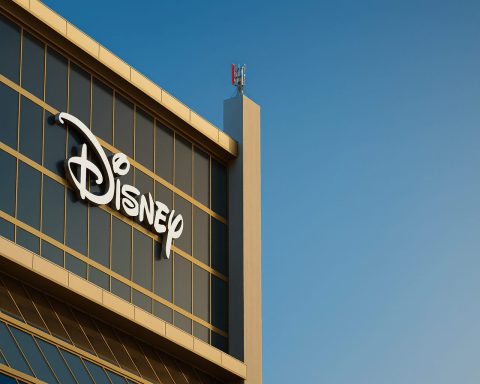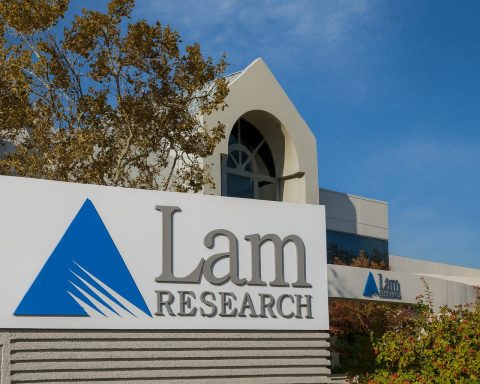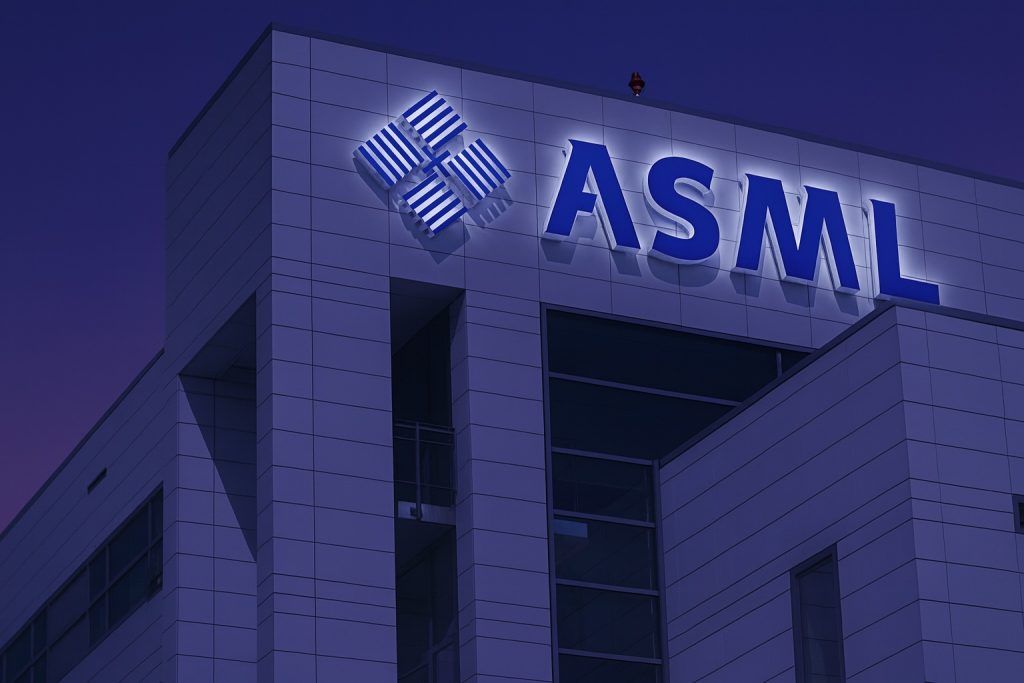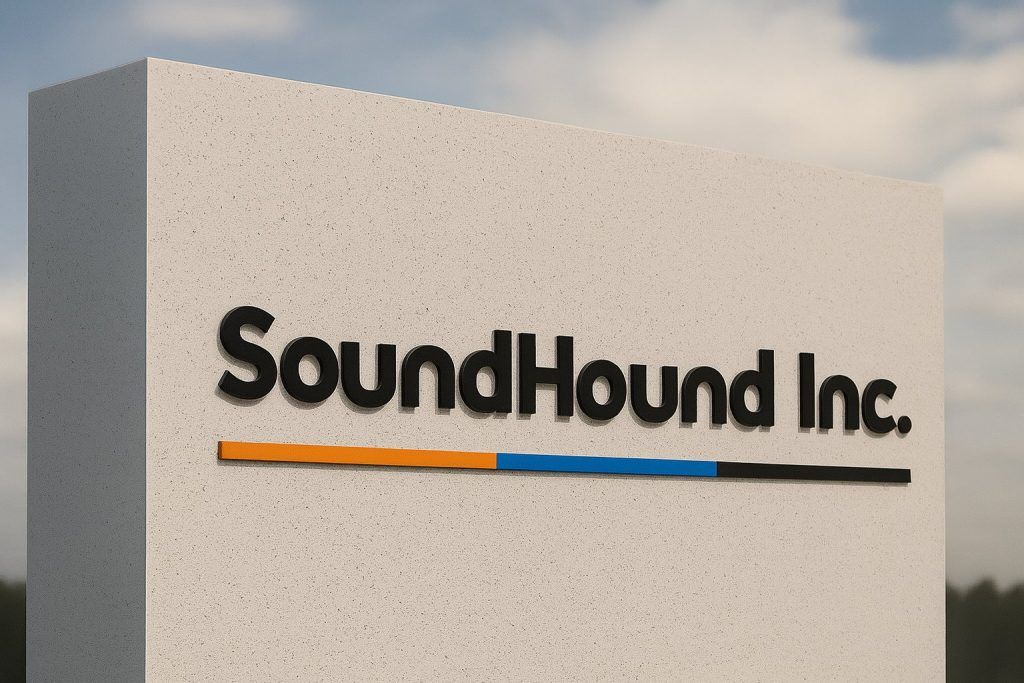- Shares Skyrocket: LVMH Moët Hennessy Louis Vuitton’s stock jumped over 12% to around €597 per share on Oct. 15, 2025 – marking its biggest one-day gain in nearly two years [1]. The rally came after an upbeat quarterly sales report sparked renewed investor enthusiasm.
- Surprise Sales Rebound:Third-quarter 2025 revenue grew ~1% organically, the first growth quarter all year, fueled by a revival in Chinese demand [2] [3]. This offered a rare bright spot for the world’s largest luxury group amid an industry-wide slump.
- 9-Month Slump Persists: Despite the Q3 uptick, year-to-date sales lag. LVMH reported €58.09 billion revenue for the first nine months of 2025, down 4% from a year earlier (–2% organically) [4]. Key segments remained soft: Fashion & Leather Goods revenue fell 8%, Wines & Spirits –7%, Perfumes & Cosmetics –2%, and Watches & Jewelry –2% [5].
- Analysts Turn Optimistic: Banks are growing bullish on luxury. Morgan Stanley upgraded LVMH to Overweight, citing a “new burst of creativity” at top brands and “important green shoots” for LVMH’s outlook [6] [7]. Deutsche Bank likewise raised LVMH to Buy (target hiked to €635) as it sees early recovery signs and potential upside if China continues improving [8] [9].
- Market-Wide Rally: LVMH’s surge lifted European markets. Paris’s CAC 40 index jumped 2.5% to near record highs, while the STOXX 600 rose ~0.8% [10]. Peer luxury stocks climbed in sympathy – Hermès, Kering, Richemont, Burberry, Moncler all leapt 5–7% [11]. The strong update eased fears that slowing global growth and tariff wars would derail Europe’s luxury leaders [12].
Stock Soars on Q3 Sales Beat
LVMH shares skyrocketed after the company’s third-quarter update hinted at a turnaround. When markets opened on Oct. 15, the stock spiked about 12%, hitting roughly €597 in morning trade [13]. It was the steepest intraday jump LVMH has seen in almost two years, propelling the company back to the top of France’s market capitalization rankings (LVMH had briefly ceded its crown as France’s most valuable firm to rival Hermès earlier this year) [14]. The catalyst was LVMH’s better-than-expected Q3 sales report: organic revenue increased ~1% in the quarter, a sharp improvement from declines earlier in 2025 [15]. This modest growth – driven largely by a rebound in Chinese luxury spending – broke a streak of negative quarters and “offered some solace to a luxury goods sector grappling with a prolonged slump,” as Reuters noted [16].
Improved demand in China was the standout factor. After many quarters of softness, LVMH’s key Asia (ex-Japan) region showed “noticeable improvement” and “Mainland China turned positive in Q3,” according to CFO Jean-Jacques Guiony (Cécile Cabanis, the newly appointed finance chief, told analysts the same) [17] [18]. Pent-up Chinese demand helped lift sales for the first time in 2025, fueling investor hopes that the critical Chinese luxury market is finally on the mend. LVMH’s CFO did caution that headwinds remain – from unfavorable exchange rates to global economic uncertainty – and warned that a sustained rebound will “take time” with “gradual sequential improvement” rather than an immediate return to boom times [19]. Nonetheless, the Q3 report marked a clear inflection point: LVMH is growing again, if only slightly, after two earlier quarters of contraction.
Market reaction to the news was unequivocal. Along with LVMH’s double-digit surge, the entire luxury sector rallied. By mid-day Oct. 15, Paris-listed LVMH was on track for its best daily gain since 2023 [20]. In New York, LVMH’s ADRs similarly jumped ~7.5% on heavy volume [21] [22]. “The results indicate a combination of self-help and slightly more positive Chinese demand, possibly on a U-shaped recovery trajectory,” observed Bernstein analysts, who highlighted the “strong beat” across LVMH’s divisions [23]. The fact that even LVMH’s troubled Fashion & Leather Goods unit (home to flagships Louis Vuitton and Dior) saw only a 2% sales drop in Q3 – far better than the –9% plunge in Q2 – reassured the market that trends are improving [24] [25]. As one analyst summed up, LVMH’s surprise sales uptick delivered “a strong beat…across divisions” and signaled that the worst might be passing [26].
Luxury Sector Headwinds vs. LVMH’s Performance
LVMH’s latest results must be viewed in the context of a broader luxury slowdown. Over the first nine months of 2025, the group’s revenue totaled €58.09 billion, a 4% decline versus the same period in 2024 [27]. In other words, despite Q3’s mild growth, year-to-date sales are still lower than last year. On an organic basis (stripping out currency and acquisitions), the nine-month top line was down ~2% [28]. The weakness has been widespread across LVMH’s portfolio. Its largest division, Fashion & Leather Goods, saw an 8% drop in revenue Jan–Sept, reflecting softer demand for handbags and high-end fashion amid post-pandemic fatigue [29]. Wines & Spirits, hurt by reduced U.S. demand for Cognac and champagne, is down 7%. Even LVMH’s typically resilient Perfumes & Cosmetics (-2%) and Watches & Jewelry (-2%) segments have slipped so far this year [30]. These declines underscore that luxury’s pandemic-era boom has flipped to a downturn, as middle-class shoppers pull back and wealthy consumers grow more cautious.
Multiple macro headwinds converged to hit the luxury sector in 2024–2025. Price hikes on luxury goods in recent years, while great for margins, have started to dampen appetite among aspirational buyers [31]. Economic uncertainties have piled up: a continuing real estate crisis in China has curtailed some high-end spending, and in the U.S., tariff wars (including Trump administration tariffs on European luxury goods) created new friction [32]. Input costs jumped as well – a surge in gold and silver prices drove up the cost of producing jewelry and watches [33]. All of these factors contributed to what analysts called a “prolonged slump” after the brief post-COVID luxury frenzy [34]. It is little surprise, then, that LVMH’s profits and sales cooled over the past year, prompting CEO Bernard Arnault to shake up leadership at several brands. In recent months LVMH has undertaken a string of creative director changes – including new designers at Dior, Celine, Loewe, and (reportedly soon) Fendi – aiming to reignite consumer excitement [35]. This creative refresh is part of LVMH’s strategy to counter the sector’s turbulence and attract a younger, more value-conscious clientele without diluting brand prestige.
Against this challenging backdrop, LVMH’s Q3 growth is a notable positive signal. The improvement was especially evident in Asia, where sales had been tumbling but now showed clear recovery. Excluding Japan, Asia saw “noticeable improvement” by Q3, LVMH noted [36]. China – which accounts for a huge share of luxury demand – appears to be rebounding earlier than expected, thanks in part to government stimulus and consumers resuming travel and spending on luxury experiences. While Europe remained an outlier (European sales are one area that did not grow in Q3, according to the company’s statement [37]), strength in China and continued solid demand in the very high-end segment have helped compensate. Executives are realistic that a full recovery will be “gradual” – LVMH is bracing for currency volatility and a softer U.S. holiday season to potentially weigh on Q4 [38]. But the consensus is that luxury’s downturn may be bottoming out. As evidence, LVMH’s stock had already begun climbing in early October ahead of earnings, buoyed by hopes that new creative collections and improving sentiment would stabilize sales. From late July to mid-October, LVMH’s Paris-listed shares rose about 13%, outperforming many peers [39]. The Q3 beat accelerated that momentum, suggesting LVMH may have turned a corner – even if a return to the heady growth of 2021–22 remains distant.
Recent Financial News & Strategic Moves
In the days leading up to the earnings report, there were hints that investors were positioning for a luxury rebound. On October 7, Morgan Stanley issued a high-profile upgrade, raising LVMH’s rating to Overweight and naming rival Kering as its new top pick in the sector [40]. The investment bank made waves by downgrading previously high-flying Hermès, essentially rotating its preference toward stocks that had lagged. Morgan Stanley’s thesis was that the luxury industry is experiencing a “creative supply shock” – a rare confluence of new creative directors at major houses – which could rejuvenate consumer interest [41]. “More creative directors are debuting at leading personal luxury brands than at any point in the past 30 years,” the analysts observed, pointing to fresh talent at Gucci, Bottega Veneta, Dior and others [42]. This “new burst of creativity” has been well received during recent fashion weeks, leading industry insiders to become “more positive about the industry’s prospects … than at any point in time over the past two to three years” [43]. In LVMH’s case, the bank sees “important green shoots”: Dior and Celine’s new designs are earning strong reviews, and a potential shake-up at Fendi is expected to “inject much-needed newness” [44]. Such developments suggest LVMH’s brands are proactively adapting to changing consumer tastes – an encouraging sign for long-term growth.
LVMH’s financial management also remains a focus of news. Earlier in 2025, Bernard Arnault reorganized parts of his empire, appointing his daughter Delphine to lead Dior and moving other trusted lieutenants into key roles [45]. These strategic shifts aimed to streamline decision-making and energize LVMH’s biggest maisons amid the sales slowdown. So far, the moves appear to be yielding some payoff: Dior’s revamped leadership coincided with resilient performance, and Louis Vuitton (led by Pharrell Williams on the design side since 2023) continues to innovate in products and marketing, helping to maintain its cachet even as demand cooled. In terms of financial health, LVMH entered this period of volatility with a strong balance sheet and cash flows from its flagship brands. This has allowed the company to keep investing in store expansions (like new boutiques in Asia), digital marketing, and selective acquisitions without jeopardizing stability. No major new acquisitions have been announced in the past few days, but market watchers note that LVMH’s war chest – bolstered by years of record profits – could enable opportunistic deals or investments if luxury asset prices fall. For now, management’s priority seems to be organic growth and navigating the current environment: as CEO Arnault put it in a prior update, LVMH is focused on “strengthening the desirability of our brands while managing costs prudently”. With the Q3 data now out, investors will be watching how Q4 unfolds, especially the critical holiday season and Chinese New Year period, to gauge if LVMH’s strategies are translating into sustained sales momentum.
Forecast & Expert Opinions
Wall Street sentiment toward LVMH and the luxury sector has swiftly shifted from gloom to guarded optimism. The upbeat Q3 news reinforced a growing view that the luxury cycle is near its trough. “All those factors point to a gradual organic sales growth recovery, which will confirm the worst is behind us,” said Charles-Louis Scotti, an analyst at Kepler Cheuvreux, after seeing new collections and pricing moves aimed at affordability [46]. Many experts now believe the luxury downturn has bottomed or will bottom by year-end. JPMorgan analysts noted that the overall environment has improved enough that they “expect a generally better luxury reporting season” ahead [47], meaning other high-end groups (like Hermès, Kering, Prada) may also surprise to the upside when they post results.
Several banks have upgraded their forecasts for LVMH following the Q3 beat. Deutsche Bank, for example, moved LVMH to a “Buy” on October 9, arguing the sector is in the early stages of recovery. The bank raised its price target on LVMH stock from €520 to €635 [48], just above where shares trade after the latest rally. Deutsche’s analysts acknowledged lingering risks – noting that Q4 sales could be choppy given tougher comparisons in the U.S. – but they advised that any short-term dips should be seen as buying opportunities, as “evidence of improvement in China” and sequential sales gains point to further upside [49]. Indeed, much of the bullish case hinges on China: if Chinese consumer spending continues to recover into 2026, it could “support further gains” for LVMH and peers [50].
Morgan Stanley’s upgrade came with a nuanced outlook. The firm expects 2026 to mark a gradual recovery year for luxury, albeit with growth still “below secular trends” after the exceptional boom of the early 2020s [51]. In their view, the sector remains in a bit of a “hangover” from years of above-trend growth, but the probability of a “bull case” in 2026 is rising [52]. That bull case would be driven by the creative momentum across brands and potential wealth effects if stock markets and real estate gains bolster high-net-worth consumer confidence in the U.S. and China [53]. For LVMH specifically, Morgan Stanley sounded an encouraging note that brand revitalization efforts are bearing fruit. The bank highlighted early positive feedback for new designers at key labels and the prospect of further talent announcements, suggesting LVMH’s houses are poised to capture renewed consumer interest [54]. On the flip side, even bullish analysts concede that risks persist – such as “weak middle-income demand” for entry-level luxury goods and currency volatility eroding Euro-denominated earnings [55]. Still, the overall tone from experts has clearly brightened: a sector that was mired in pessimism just a few months ago is now viewed as one where the worst may be over [56].
Market commentators also emphasize LVMH’s resilience and track record. “LVMH is a sector bellwether,” wrote Reuters, noting the group’s diversified empire (from Louis Vuitton and Tiffany to Moët & Chandon and Sephora) positions it to weather storms better than most [57]. During the slump, LVMH’s sheer scale and brand strength allowed it to continue growing its market share – a dynamic that some analysts say could translate into outsized gains when the sector rebounds. Bernstein analysts, who have been cautiously optimistic, remarked that LVMH’s Q3 showing “exceeded expectations across all divisions,” reinforcing their confidence in the company’s strategy [58]. They and others foresee a return to mid-single-digit organic growth in 2024–2025 if current trends hold. While it may be too early to declare a full luxury comeback, the consensus of expert opinion is that LVMH’s prospects look far better now than they did at mid-year, thanks to the combination of management actions, creative renewal, and nascent recovery signs in key markets.
Broader Market Context and Competitors
LVMH’s fortunes are closely tied to the broader European stock market and luxury peer performance. The company’s blockbuster rally reverberated through financial markets this week. In Paris, the CAC 40 index – heavily weighted with luxury names – soared 2.5% on Oct. 15, nearing all-time highs [59]. Luxury stocks have an outsized influence on France’s benchmark index (LVMH alone is a double-digit percentage of the CAC 40 by market cap). As LVMH shares spiked, other European luxury houses rode the wave: Hermès jumped about 7%, Kering 6%, Switzerland’s Richemont ~6%, Britain’s Burberry ~6%, and Italy’s Moncler ~8% [60]. These concurrent gains added billions to the sector’s market value in a single day – a dramatic reversal from the steep selloffs seen over the summer. The STOXX Europe Luxury 10 index (which tracks top luxury goods firms) is now sharply off its lows and has rallied to the highest levels since late spring [61]. Even the pan-European STOXX 600 index got a boost, up ~0.8%, helped by not only luxury’s rebound but also solid earnings from tech names like ASML [62]. In short, LVMH’s surprise strength provided a much-needed shot of confidence to European equities, which had been weighed down by growth fears and geopolitical worries in recent months.
In the global context, the luxury rebound story is emerging as a counterpoint to concerns about high interest rates and sluggish growth. Investors worldwide have been monitoring whether China’s economic slowdown would cause a hard landing for luxury. LVMH’s update – sales in China swung back to growth – suggests a more benign scenario: a dip followed by a moderate recovery, rather than a sustained collapse in demand [63]. That narrative has implications beyond just handbags and champagne. Luxury spending is a barometer for affluent consumer confidence, tourism flows, and even currency movements (a stronger yuan tends to encourage Chinese shoppers to buy abroad). Some macro strategists now argue that Europe’s economic outlook is brightening thanks in part to the resilience of its luxury/export champions. “Upbeat results from LVMH sparked a rally in luxury groups and quelled concerns that slowing global growth and tariff wars are taking a toll on corporate health,” Reuters reported of the market reaction [64]. This highlights how a turnaround at companies like LVMH can ripple through sentiment on Europe and China. Moreover, with the U.S. Federal Reserve signaling potential interest rate cuts ahead as inflation cools [65], the prospect of easier global financial conditions in 2026 could provide an additional tailwind for high-end consumer stocks.
Competition in the luxury arena remains fierce, even as all boats rise for now. Hermès – often seen as the most insulated luxury name due to its ultra-wealthy clientele – briefly surpassed LVMH in market capitalization earlier in 2025 when LVMH’s shares stumbled [66]. That was a symbolic passing of the torch, reflecting just how hard LVMH had been hit by the sector downturn relative to its rival. However, LVMH’s latest surge decisively restores its lead; at €597, LVMH’s market cap is roughly back above €300 billion, once again topping Hermès. Meanwhile, Kering (owner of Gucci) has been struggling with its own turnaround, but Morgan Stanley’s recent upgrade and the buzz around new Gucci designer Sabato De Sarno have boosted Kering’s stock over 15% in October [67] [68]. Richemont, known for Cartier jewelry and high-end watches, has benefited from speculation that Chinese demand for jewelry will accelerate if the property slump abates. And Burberry in the UK, which was upgraded alongside LVMH by Deutsche Bank, is seen as a value play that could catch up if luxury spending normalizes [69]. In the U.S., investors are also eyeing names like Tapestry and Capri (recently acquired by Tapestry) to gauge if affordable luxury is rebounding. For now, the entire luxury segment is in rally mode, but LVMH – as the bellwether – will be the key player to watch in the coming months to confirm whether this recovery is durable.
Macroeconomic factors will continue to influence LVMH’s stock trajectory. Currency swings are one: the euro’s value affects LVMH’s reported earnings, and a strong dollar (as seen earlier in 2025) can crimp tourism shopping in Europe. Trade policies are another wild card – the mention of a potential 100% U.S. tariff on certain goods (a topic in trade negotiations) sent jitters through luxury circles recently [70], though no such tariff has materialized. On the positive side, monetary easing could create a more favorable backdrop; Federal Reserve Chair Jerome Powell’s latest comments about likely rate cuts and possibly ending quantitative tightening buoyed global markets [71], an environment in which cyclical sectors like luxury typically perform well. Europe’s own inflation has been trending down, which might strengthen consumer purchasing power domestically. Additionally, any stimulus in China – for example, moves to support the property market or boost household spending – would directly benefit luxury leaders like LVMH. Conversely, if geopolitical tensions (such as in the Middle East or a resurgence of COVID-19 concerns) undermine consumer confidence, luxury sales could stall again.
For now, investors appear to be focusing on the upside catalysts, and LVMH’s stock is reflecting that guarded optimism. The company’s strong brand portfolio, proactive management changes, and evidence of recovery in Asia have combined to flip the narrative from doom to hope. As one market strategist quipped, “Luxury was in the doghouse, but it’s suddenly back in vogue.” With LVMH’s share price on the upswing and experts predicting brighter days ahead, the coming quarters will test whether the luxury giant can fully capitalize on the returning demand – or if lingering challenges will require further patience. All eyes will be on LVMH’s next earnings and the crucial holiday season to see if this spark of resurgence can turn into a sustained rally for the stock and the sector.
Sources: LVMH earnings reports and statements; Reuters, Nasdaq/RTT News and TS² Tech financial news updates; analyst commentary from Morgan Stanley, Deutsche Bank, Bernstein, and Kepler Cheuvreux [72] [73] [74] [75] [76] [77].
References
1. www.investing.com, 2. www.reuters.com, 3. www.reuters.com, 4. ts2.tech, 5. ts2.tech, 6. www.investing.com, 7. www.investing.com, 8. www.investing.com, 9. www.investing.com, 10. www.reuters.com, 11. www.investing.com, 12. www.reuters.com, 13. www.investing.com, 14. www.reuters.com, 15. www.reuters.com, 16. www.reuters.com, 17. www.reuters.com, 18. www.reuters.com, 19. www.reuters.com, 20. www.reuters.com, 21. www.reuters.com, 22. www.reuters.com, 23. www.reuters.com, 24. www.reuters.com, 25. www.reuters.com, 26. www.reuters.com, 27. ts2.tech, 28. ts2.tech, 29. ts2.tech, 30. ts2.tech, 31. www.reuters.com, 32. www.reuters.com, 33. www.reuters.com, 34. www.reuters.com, 35. www.reuters.com, 36. www.reuters.com, 37. finance.yahoo.com, 38. www.reuters.com, 39. www.reuters.com, 40. www.investing.com, 41. www.investing.com, 42. www.investing.com, 43. www.investing.com, 44. www.investing.com, 45. www.reuters.com, 46. www.reuters.com, 47. www.investing.com, 48. www.investing.com, 49. www.investing.com, 50. www.investing.com, 51. www.investing.com, 52. www.investing.com, 53. www.investing.com, 54. www.investing.com, 55. www.investing.com, 56. www.reuters.com, 57. www.reuters.com, 58. www.investing.com, 59. www.reuters.com, 60. www.investing.com, 61. www.reuters.com, 62. www.reuters.com, 63. www.reuters.com, 64. www.reuters.com, 65. ts2.tech, 66. www.reuters.com, 67. www.reuters.com, 68. www.investing.com, 69. www.investing.com, 70. ts2.tech, 71. ts2.tech, 72. www.reuters.com, 73. ts2.tech, 74. www.investing.com, 75. www.investing.com, 76. www.investing.com, 77. www.reuters.com
